A deep dive into Sinulog’s origins
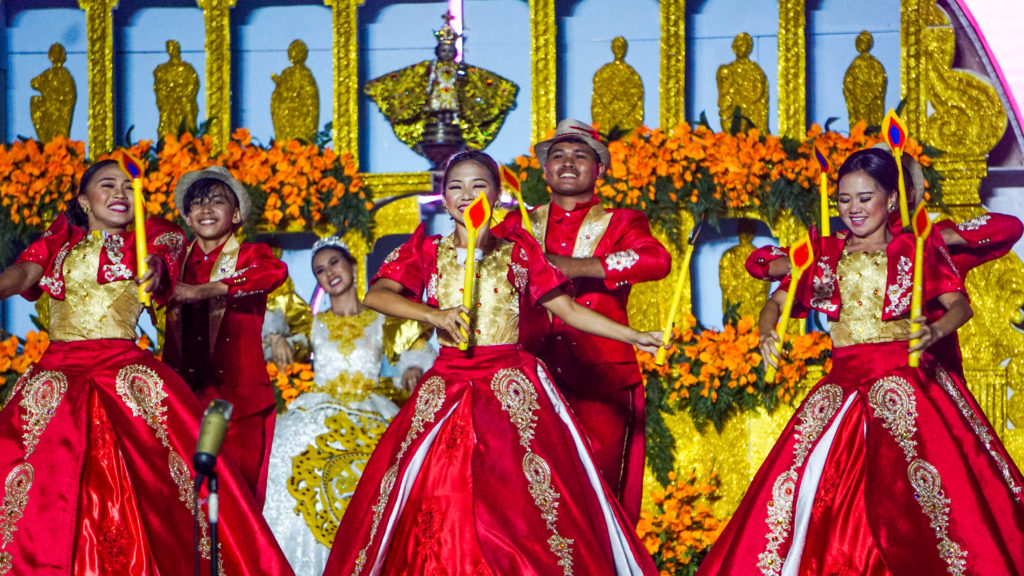
The Sinanduloy Cultural Group, which finished with three major awards during the Sinulog 2020, is seen performing in this January 2020 photo.
CEBU CITY, Philippines — Festivities around the world tend to quiet down after the New Year—but in Cebu, the celebration goes on.
Every January, the city bursts to life with the Sinulog Festival, drawing millions of visitors from across the globe.
Considered as the “grandest and largest festival” in the Philippines, is the secular celebration of the Feast of Señor Santo Niño de Cebu, held on the third Sunday of the month.
Though the Santo Niño is not the official patron saint of Cebu City, this Holy Child holds deep cultural and religious significance not only for Cebuanos but devotees from different parts of the world.
The festival’s rich traditions, both spiritual and festive, have kept this devotion alive for centuries, making Sinulog more than just an event—it’s a reflection of faith and identity.
In this story, CDN Digital delves into the fascinating origins and evolution of the Sinulog Festival.
From Sinug
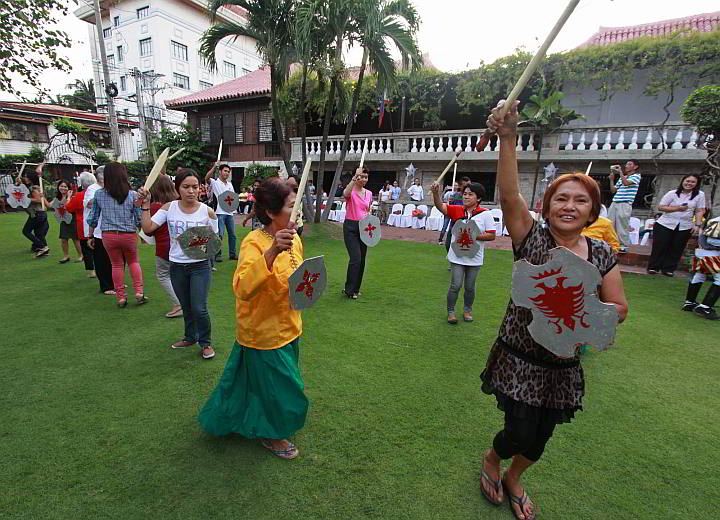
Carol Diola grand daughter of Estelita “Titang” Diola leads the traditional Sinulog dance at the Casa Gorordo. (CDN FILE PHOTO)
Sinulog is derived from the Cebuano term sulog, which means water current in English.
The ritual prayer-dance we know of today — the iconic ‘one step forward, two steps backward’ – is a mimicry of the movement of flowing water.
But many historians believed that while it is closely associated to the devotion of the Sto. Niño and Christianity itself, the Sinulog dance may have had already existed in the pre-colonial era.
In one of her columns, the late CDN columnist and history professor, Madrileña de la Cerna, wrote how Cebuano dance researchers, Prof. Caesar Nimor and Mila Catelo-Janson, traced it back to ancient times.
Nimor and Catelo-Janson’s findings showed that the contemporary Sinulog dance might have evolved from an ‘ancient ritual’ called the ‘sinug’.
“It is a survivor of indigenous dance ritual despite more than three hundred years of colonization. With the sinug, there is a shift from ritual, from the diwata to Santo Niño,” de la Cerna wrote.
READ MORE: The traditions of ‘Sinug’ candle vendors at the Basilica Minore del Santo Niño
Origins
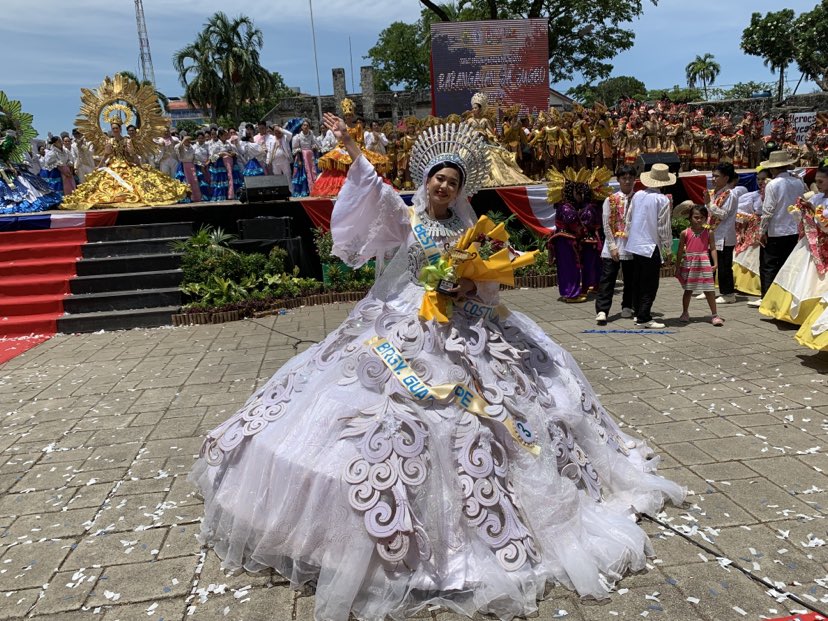
Barangay Guadalupe won the festival queen competition of “Barangayan sa Sugbo 2023.” | Emmariel Ares
Nimor and Catelo-Janson shared three theories on the origins of sinug.
The first version is that the sinug itself, as de la Cerna described, is ’an ancient indigenous origin as strongly evidenced by the inhabitants of the Visayas.’
The second one is undeniably the most popular, as it tells the dance of Queen Juana, the Christian name of Rajah Humabon’s wife, Hara Humamay (or Amihan), after being baptized into Christianity.
This story, where there is a festival queen, is commonly incorporated for Sinulog-based performances.
The third talks about the story of Humabon’s adviser, Baladhay.
“One day, Humabon’s household was surprised to hear shouting and dancing from the room of Baladhay. Baladhay was dancing and shouting while being tickled with a coconut midrib by the Santo Niño,” de la Cerna said.
READ MORE: ‘Sinug sa Casa Gorordo’ returns on Jan. 16
Versions
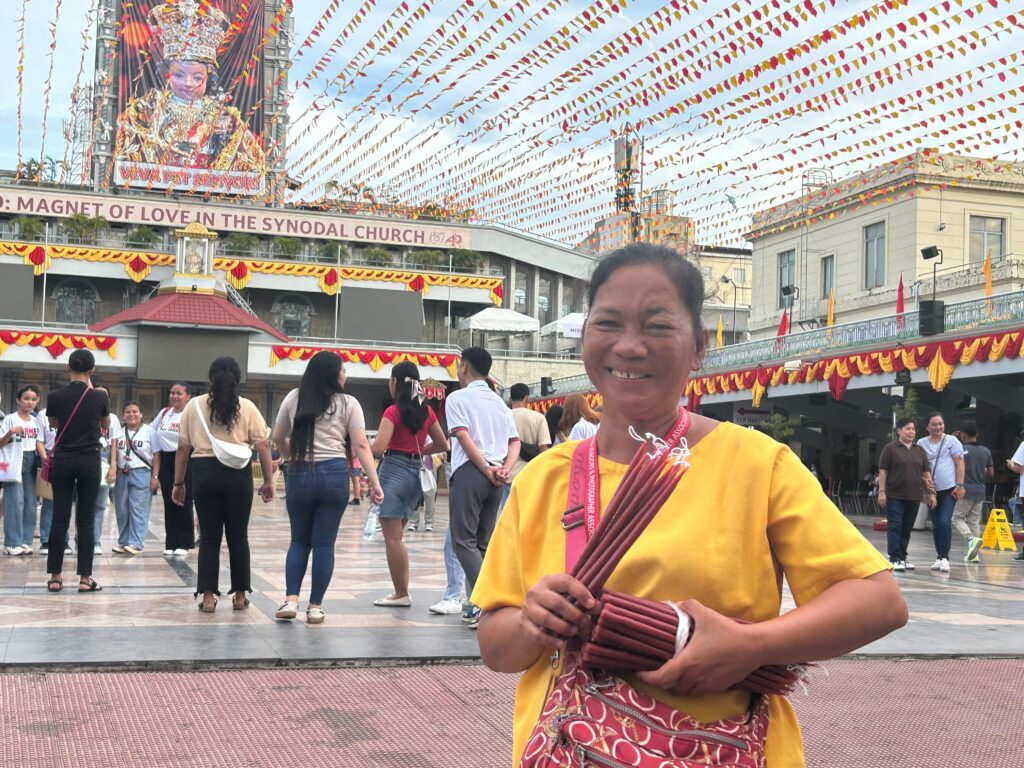
Geaseth Dela Fuente, a 46-year-old candle vendor at the Basilica Minore del Sto. Niño. CDN Digital photo | Pia Piquero
There are two version of the sinug – the ‘votive’ and ‘combative’.
The votive refers to the dance performed by candle vendors outside the centuries-old Basilica Minore del Sto. Niño de Cebu.
It was also called as the sinug sa tindera’g kandila. These candle vendors – usually old women – were largely credited in keeping the traditional sinug dance alive throughout the years.
Nimor described the votive as ‘the most indigenous’ form, where dancers did not carry the image of the Sto. Niño as it was considered blasphemous.
Instead, they perform with the Holy Child placed on an altar.
The other type of the sinug is the ‘combative’ which became popular after the Turang Dance Troupe in Mabolo, led by Buenaventura ‘Turang’ Diola, introduced it sometime in the 1800s.
In the ‘combative’ sinug, the dance tells the story of the arrival of Christianity in the Philippines, the clash between the natives and the Spaniards then concluding with a tale of friendship between the two races.
The contemporary version of the sinug, the Sinulog Dance we know of today, is actually a combination of the steps borrowed from the votive and combative versions.
READ MORE: Sinug vis-à-vis Sinulog
Modern-day Sinulog
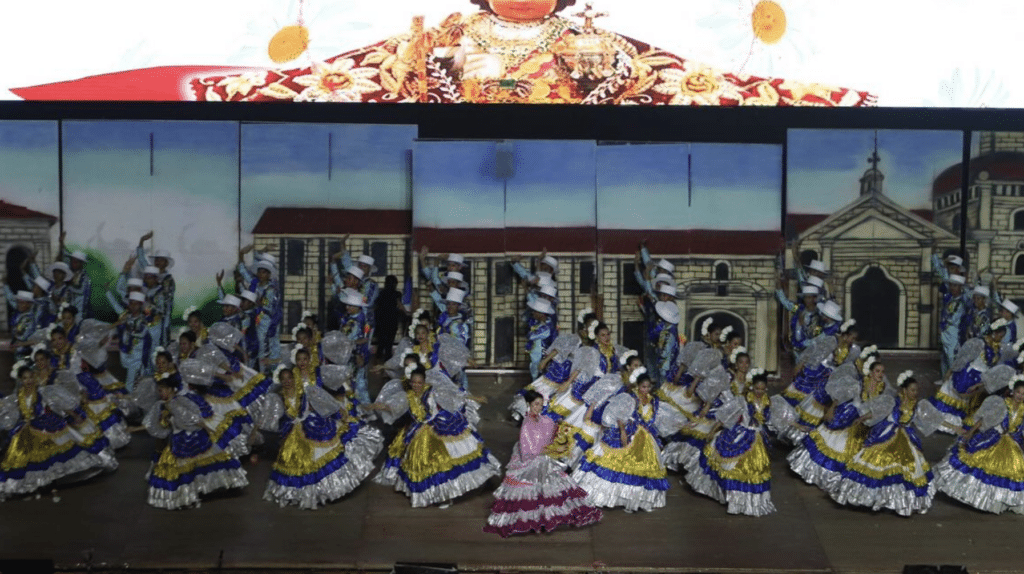
The third contingent, Lapu-Lapu City, delights spectators at the Cebu City Sports Center with their touching concept in the Sinulog sa Lalawigan 2024 on Sunday. They also surprised the crowd with a fireworks display at the end of their performance. | CDN Digital Photo by Christian Dave Cuizon
Undoubtedly, the Sinulog is deeply rooted in Cebu’s rich and colorful history but it wasn’t until the late 20th century when the world finally learned about its significance.
In 1980, then Regional Director of the Ministry for Youth and Sports Development (MYSD) in Central Visayas, David ‘Boy’ Odilao Jr., decided to showcase the sinug not just a religious activity but also an identity for Cebu.
And so, Sinulog sa Sugbo was born.
His vision was to establish the identity of Cebuanos through a dance that pays homage to Señor Santo Niño de Cebu.
The first Sinulog sa Sugbo was held in 1980, and during that time, Boy Odilao not only founded the event but also participated in it by dancing alongside performers.
The original carousel route of the parade started in downtown Cebu and ended at Plaza Independencia.
Today’s lead organizers of the Sinulog credited Odilao as the founder of the modern-day Sinulog.
READ MORE: FACES OF CEBU: Boy Odilao, founder of Sinulog Festival
Evolution
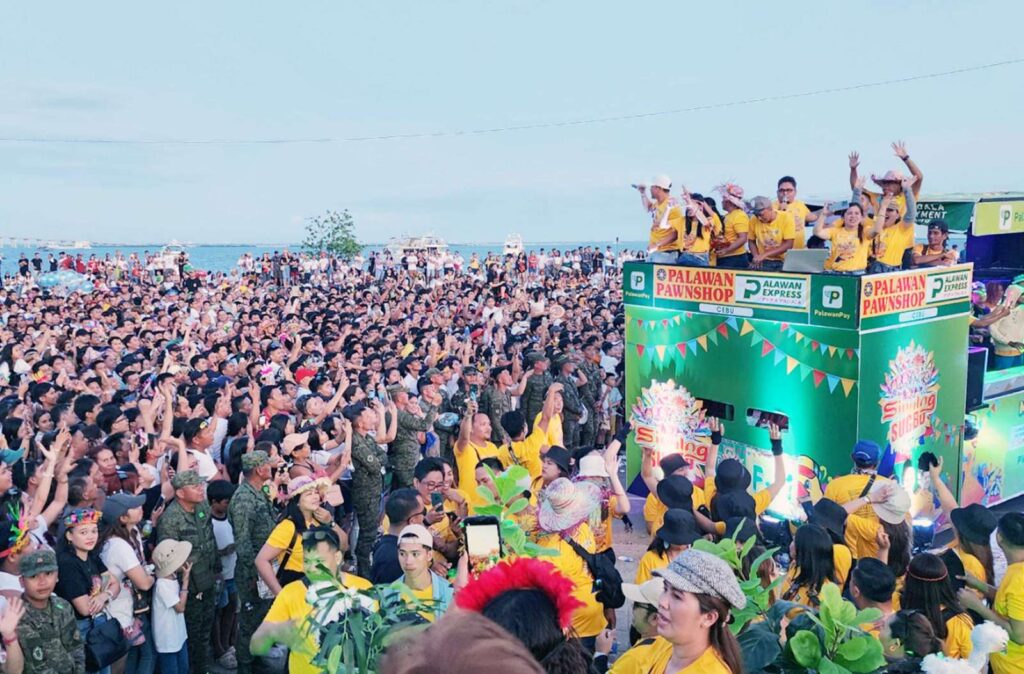
Palawan Group of Companies’ vibrant float graces the Sinulog Festival annually, a heartfelt gesture of appreciation for the unwavering support of the Cebuanos
What started as a small local celebration quickly gained attention for its vibrancy and cultural significance.
Over the years, Sinulog evolved from a city-wide event into one of the Philippines’ grandest festivals, attracting millions of devotees and tourists annually.
Today, the Sinulog Festival spans an entire week of activities.
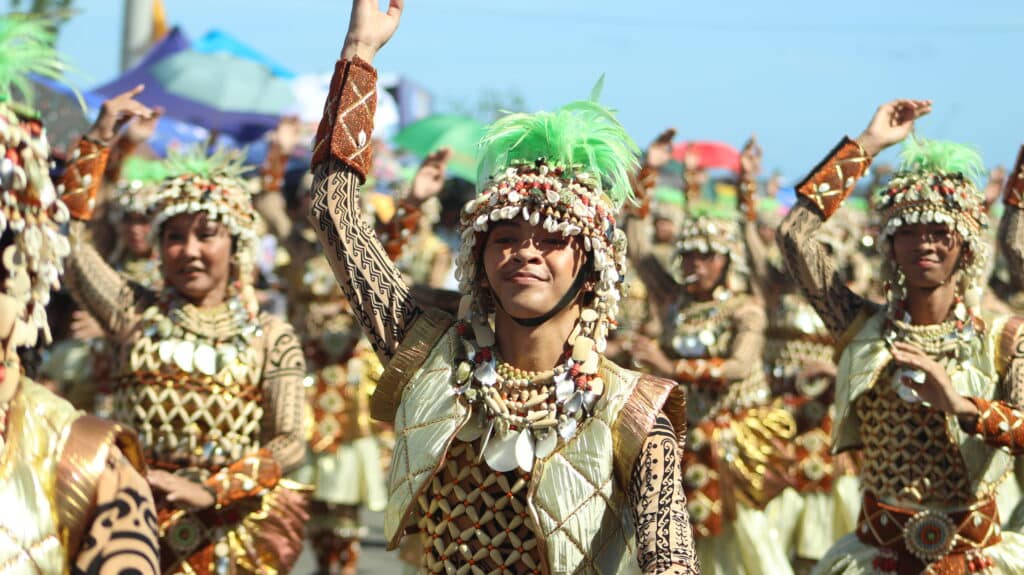
Sinulog sa Sugbo 2024 at South Road Properties (SRP)/ Christian Dave Cuizon
The Grand Parade, in particular, showcases elaborately designed floats, colorful costumes, and dance performances that combine traditional and modern choreography.
The festival has also incorporated competitions, with contingents from across the country and even international groups participating in dance and singing contests.
While the Sinulog remains a deeply religious event for many, anchored in the devotion to the Santo Niño, it also served as a global showcase of Filipino artistry and creativity.
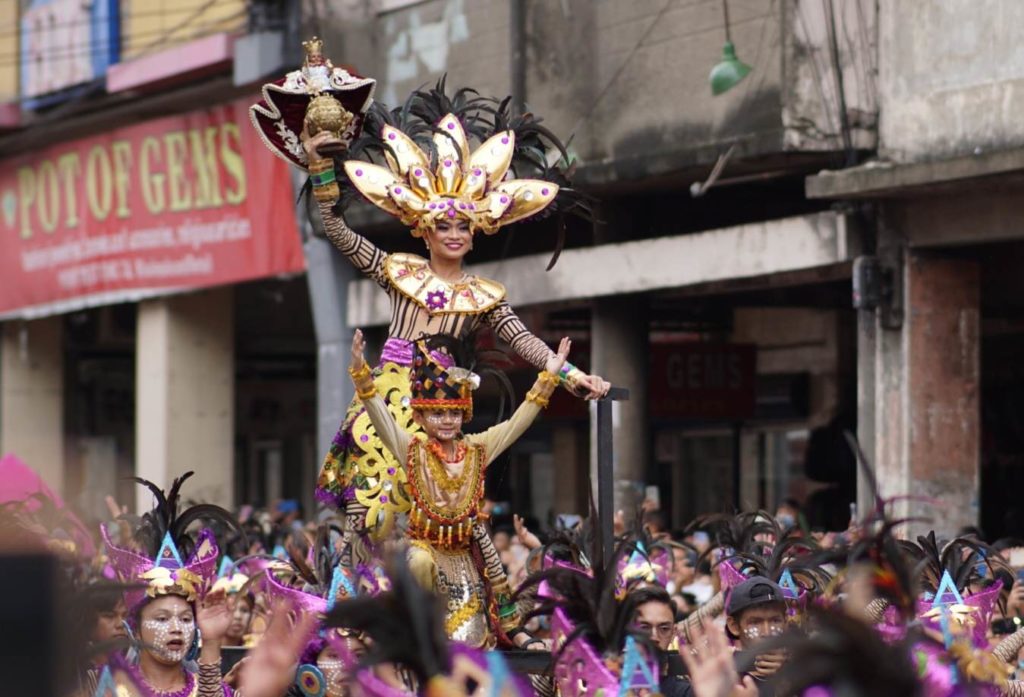
Nine performers and support staff of contingents have been assisted by emergency responders in the course of the Sinulog sa Kabataan 2023 today, Jan. 8, 2023, in Cebu City. | James Amistad
Even today, the Sinulog festival continues to honor its humble beginnings, preserving the spirit of faith and community at its core. / with reports from Pia Piquero
 CDN Digital Sinulog 2024 coverage is in partnership with:
CDN Digital Sinulog 2024 coverage is in partnership with:
- Filipino Homes
- BingoPlus
- Primary Homes Inc.
- Grab
- Move It
- Contempo Property Holdings Inc.
- Winzir
- Valencia Residences by VistaLand
- City Di Mare (CDM) proudly celebrates Sinulog 2025 with Cebuanos!
- Anjo World Theme Park
- Cebu Beach Club
- Bohol Beach Club
- bai Hotel Cebu
- Islands Souvenirs
- Jollibee
- AppleOne
Disclaimer: The comments uploaded on this site do not necessarily represent or reflect the views of management and owner of Cebudailynews. We reserve the right to exclude comments that we deem to be inconsistent with our editorial standards.
